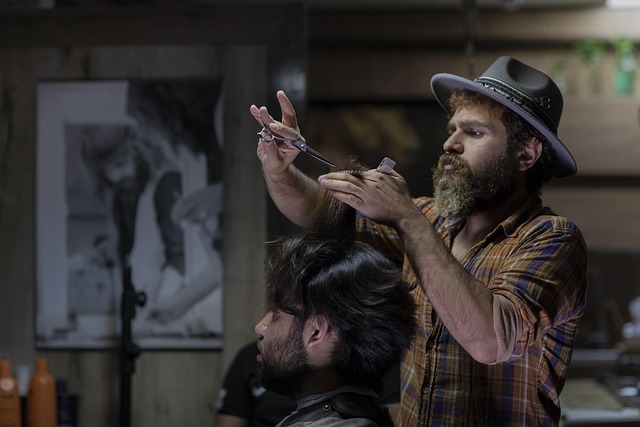The Barber's Legacy: From Ancient Times to Modern Icons
Throughout history, barbers have played a significant role in shaping not only hair but also social trends and cultures. Once regarded as community staples in ancient civilizations, today's barbers are evolving into style icons and essential service providers. This article ventures into the rich history, artistic craftsmanship, and modern-day significance of the barber profession.

What Made Barbers Community Cornerstones in Ancient Civilizations?
In ancient societies, barbers held positions of remarkable importance that extended far beyond simple grooming. These skilled craftsmen served as vital community gathering points where citizens would exchange news, conduct business, and engage in social discourse. Archaeological evidence suggests that organized barbering practices existed in ancient Egypt as early as 3000 BCE, where barbers catered to nobility and common people alike.
Ancient civilizations recognized barbers as essential service providers who maintained public health and social order. In many cultures, a well-groomed appearance signified social status, cleanliness, and respectability. Barbers ensured that community members could present themselves appropriately for religious ceremonies, political gatherings, and social events. Their shops became informal community centers where important local matters were discussed and decisions made.
How Did Barbers Fashion Influencers of Ancient Rome Shape Style?
Roman barbers, known as “tonsores,” revolutionized the concept of personal grooming and established themselves as the original fashion influencers. These skilled artisans didn’t merely cut hair; they created elaborate hairstyles that reflected social status, political affiliations, and personal identity. Roman barbershops, called “tonstrina,” lined busy streets and became hubs of fashion innovation.
The influence of Roman barbers extended throughout the empire, spreading standardized grooming practices and style trends across diverse cultures. They developed sophisticated techniques for beard trimming, hair styling, and even early forms of cosmetic application. Wealthy Romans would employ personal barbers who traveled with them, ensuring consistent grooming standards regardless of location. These professionals essentially created the first international beauty standards, influencing grooming practices that persisted for centuries.
Why Were Barber-Surgeons The Original Jack-of-All-Trades?
During medieval times, barbers expanded their skill sets dramatically, becoming barber-surgeons who provided comprehensive healthcare services alongside traditional grooming. This unique combination emerged from practical necessity, as barbers possessed the sharp tools and steady hands required for both hair cutting and surgical procedures. They performed tooth extractions, bloodletting, wound treatment, and even minor surgical operations.
The iconic barber pole originated from this dual profession, with red and white stripes symbolizing blood and bandages used in medical procedures. Barber-surgeons maintained their dual roles for several centuries, particularly in rural communities where specialized medical practitioners were scarce. Their versatility made them indispensable community members who could address both aesthetic and health-related needs. This tradition persisted until formal medical education became more standardized and the professions gradually separated.
What Drove the Journey From Shells to Scissors Evolution?
The evolution of hair cutting tools represents humanity’s continuous pursuit of precision and efficiency in personal grooming. Early barbers used sharpened shells, flint blades, and primitive metal tools that required exceptional skill to operate safely. Bronze Age civilizations developed the first recognizable razors and cutting implements, while ancient Egyptians created sophisticated bronze and copper tools specifically designed for barbering.
The development of steel metallurgy revolutionized the profession, enabling the creation of sharper, more durable cutting instruments. Medieval craftsmen refined these tools further, developing the first recognizable scissors and specialized razors. The Industrial Revolution brought mass production capabilities, making high-quality barbering tools accessible to practitioners worldwide. Modern technological advances have introduced electric clippers, precision trimmers, and specialized cutting systems that continue advancing the craft.
How Do Modern Barbers Style Icons Impact American Culture?
Contemporary American barbershops have experienced a remarkable renaissance, with barbers establishing themselves as influential style icons who shape fashion trends and cultural movements. This resurgence has transformed neighborhood barbershops into destinations where clients seek not just haircuts, but complete style consultations and cultural experiences. Modern barbers have leveraged social media platforms to showcase their artistry, building substantial followings and influencing grooming trends nationwide.
The craft barber movement has elevated the profession significantly, with skilled practitioners earning recognition comparable to other artistic professions. Many American barbers now specialize in vintage techniques, contemporary styles, or fusion approaches that blend traditional methods with modern innovation. They’ve become cultural ambassadors who preserve historical barbering traditions while adapting to contemporary aesthetic preferences and lifestyle demands.
What Investment Is Required for Professional Barbering Services?
Understanding the financial aspects of professional barbering helps both aspiring barbers and clients make informed decisions. Starting a barbering career requires initial investment in education, licensing, and equipment, while clients should understand typical service pricing structures.
| Service Type | Average Cost Range | Duration | Additional Notes |
|---|---|---|---|
| Basic Haircut | $15-$35 | 30-45 minutes | Varies by location and experience |
| Full Service Cut & Style | $35-$75 | 45-60 minutes | Includes wash and styling |
| Beard Trim & Shape | $20-$45 | 20-30 minutes | Often bundled with haircuts |
| Traditional Hot Towel Shave | $40-$80 | 45-60 minutes | Premium service offering |
| Barber Training Program | $10,000-$20,000 | 9-18 months | Includes licensing preparation |
Prices, rates, or cost estimates mentioned in this article are based on the latest available information but may change over time. Independent research is advised before making financial decisions.
Conclusion
The barbering profession has maintained its cultural significance through millennia of social change, technological advancement, and evolving aesthetic preferences. From serving as community cornerstones in ancient civilizations to becoming modern style icons and essential service providers, barbers have consistently adapted while preserving the fundamental human need for professional grooming and social connection. Today’s barbers continue honoring their rich heritage while embracing innovation, ensuring this timeless profession remains relevant and valued in contemporary society. Their evolution from simple hair cutters to multifaceted style professionals demonstrates the enduring importance of skilled craftsmanship in personal care and community building.




